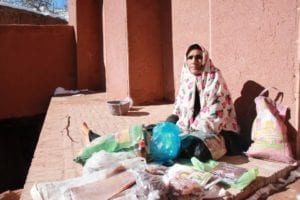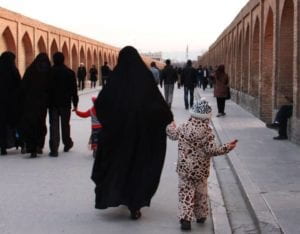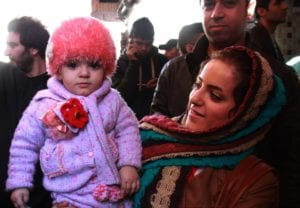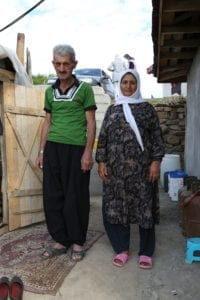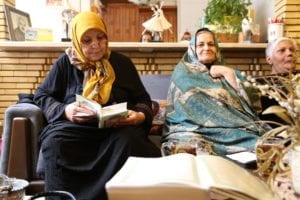Nahal Mottaghian
Tehran, Iran
It is now summertime in Iran, and the Islamic dress code has been nothing but a nuisance. My monteau, a loose-fitting overcoat, keeps me constantly sweating, and my hijab adds a layer of heat. When I came to Iran in January of 2014, it was wintertime and cold, so the Islamic dress code didn’t bother me so much. Wearing a long coat was only logical, and wearing a hijab added a layer of warmth.
When I was preparing for this summer’s trip, my grandma advised me to arrive dressing as conservatively as possible. It was still the holy month of Ramadan when I landed on June 14, and I was told that the police were extra-sensitive about the dress code. So, I wore all gray—a gray monteau down to my ankles, a gray hijab folded for double thickness, just to be sure you couldn’t see through to my hair. I had removed my nose ring, my 3 bracelets, my 7 rings. My gray pants rose past my ankles when sitting down, so I bought men’s grey dress socks from the Istanbul airport, just to be safe.
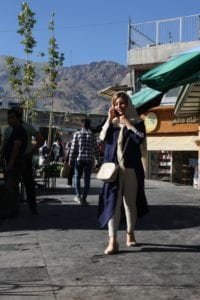
When I arrived and looked around, I wanted to laugh out loud. I must have looked like such a fool! Iranian women were not dressed like I was. Their monteaus came in every length and color. Their hijabs sat halfway back on their heads, revealing almost the entirety of their hair. They wore jewelry, makeup, bright-colored nail polish, and open-toed shoes.
I felt like I should have known better. I am Iranian-American. My entire family is Iranian. And I had been to Iran before.
It was easy for me to assume that this liberal style of dress was influenced by the feminist movement. I thought, look at this act of rebellion! The women’s rights movement, in action, right before my eyes!
I sat down with a friend one day and told her my thoughts. She said, “Where do you think these women buy their ‘liberal’ clothing from? Iranian shops, owned by Iranian businessmen, regulated by the Iranian government. Is it really an act of rebellion when the government is allowing it?”

I didn’t know how to answer her. But it did put some things into perspective. If people assume that Iran is under Talibanesque rule, it’s easy to be shocked by the liberal dress. And it is even easier to look at Iranian women and think, maybe they don’t have it that bad.
Yet, while the fight might start with pushing back against the dress code, it does not end there. In fact, it barely scratches the surface of the movement.
Another friend said to me over tea, “Maybe one day, wearing a hijab won’t be mandatory. But does it really matter if I’m not wearing a hijab [if] I still don’t have the right to divorce, or to the custody of my own children?”
